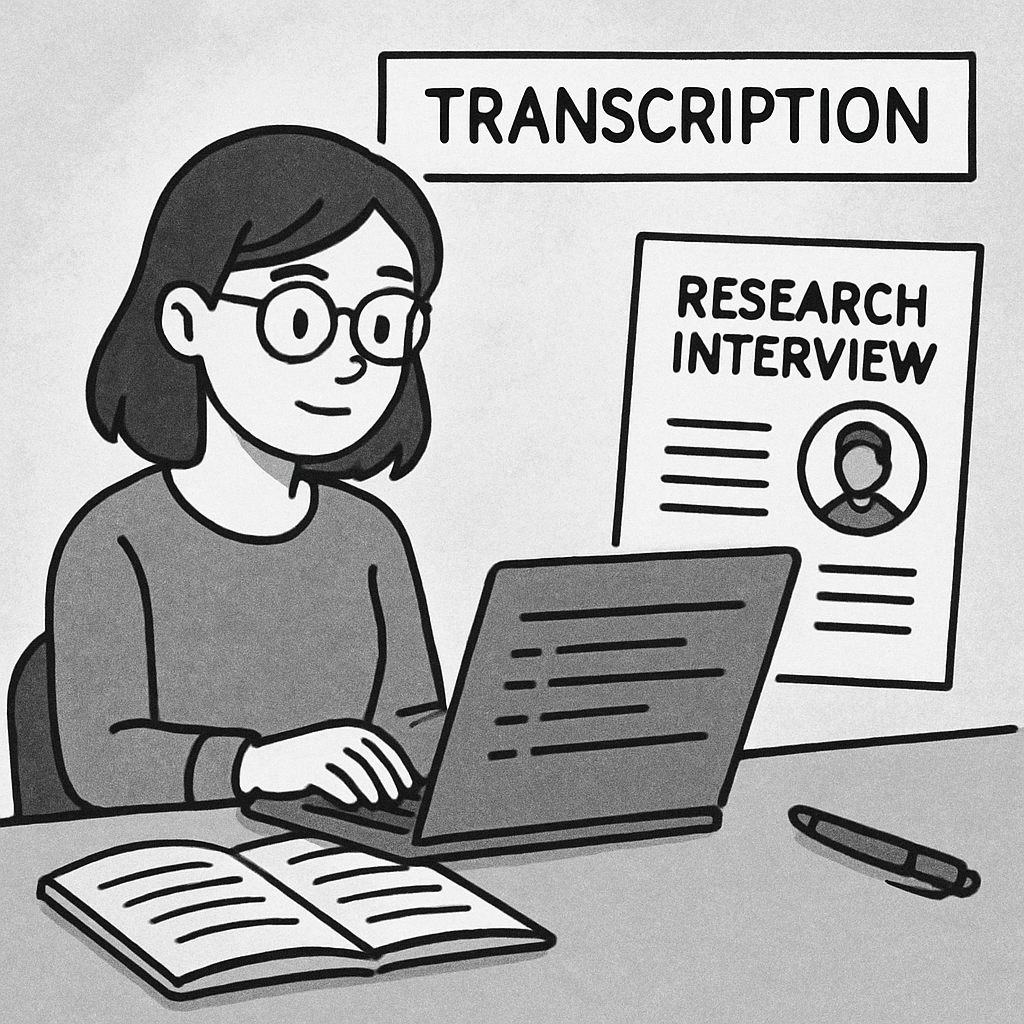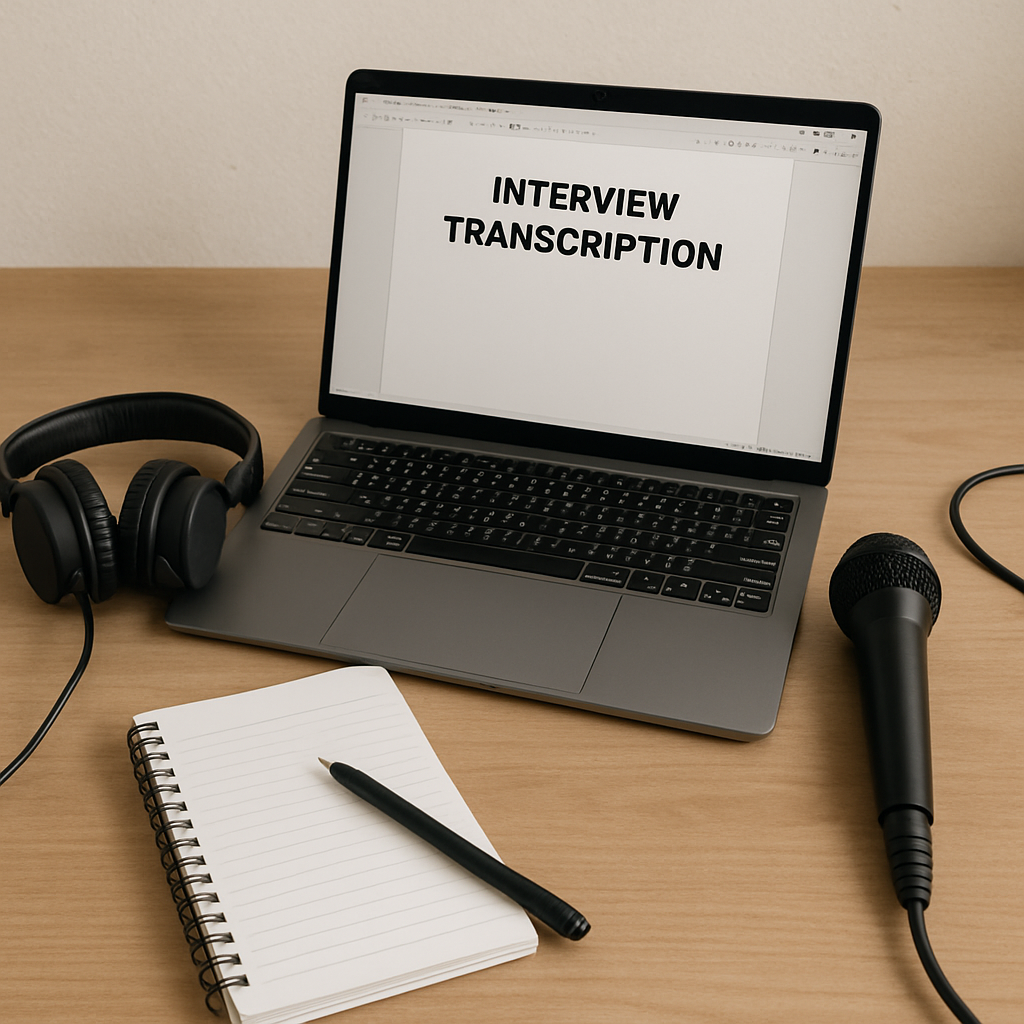Transcribing interviews is a pivotal step in many research projects, particularly those focused on qualitative research. Whether you’re a seasoned researcher or a student embarking on your first project, understanding the nuances of effective transcription can significantly enhance the quality of your work. This guide explores intelligent strategies to transcribe interviews for research projects and offers practical tips to streamline the process.

Transcribing interviews involves converting spoken words into written text. It is a vital step in qualitative research, helping researchers to analyze interviews thoroughly. The process allows for a detailed examination of language, intonation, and the context of the conversation, which can be crucial for interview analysis.
Creating a Permanent Record
Transcriptions provide a permanent record that can be revisited multiple times, ensuring that no critical insights are overlooked. This permanence is invaluable in research, where revisiting conversations can reveal new insights and reinforce initial findings. Moreover, having a written record allows researchers to track the evolution of thoughts and ideas over time.
Enhancing Collaboration
Written transcripts make it easier to share findings with colleagues and stakeholders, thus enhancing collaboration and discussion. When team members can review the same transcript, it fosters a more unified understanding of the data. This shared resource ensures that everyone is on the same page, allowing for more productive discussions and decision-making.
Supporting Detailed Analysis
Transcription supports detailed analysis by allowing researchers to dive deep into the nuances of the conversation. This includes examining language use, identifying recurring themes, and analyzing the emotional undertones of the dialogue. Such in-depth analysis can lead to more robust and insightful conclusions, ultimately strengthening the research.
Preparing for Transcription
Before you begin transcribing interviews, proper preparation is key. This involves selecting the right tools and setting up a conducive environment for transcription.
Choosing the Right Equipment
To start, invest in quality headphones to ensure clarity in audio transcription. Background noise can distort sound, so noise-cancelling headphones are ideal. High-quality headphones can help distinguish between similar-sounding words and capture subtle nuances in tone. Additionally, consider using a foot pedal, which allows you to control audio playback without removing your hands from the keyboard. This can significantly increase your transcription speed and efficiency. There are various foot pedals available, but ensure you select one compatible with your transcription software.
Setting Up Your Workspace
Creating a comfortable and distraction-free workspace is crucial for effective transcription. Ensure that your workspace is well-lit and ergonomically designed to prevent strain during long transcription sessions. Consider factors like seating, desk height, and screen placement to promote comfort and efficiency. A well-organized workspace can reduce distractions and help maintain focus, leading to higher quality transcriptions.
Selecting Transcription Software
Many transcription software options are available, some of which offer automatic transcription features. While automated services can save time, they may not be entirely accurate, especially with complex or technical language. Manual transcription, although more time-consuming, ensures greater accuracy and attention to detail. It’s important to weigh the pros and cons of each software option and choose one that best fits your needs.
Some popular transcription services and software include:
- Express Scribe: Known for its user-friendly interface and compatibility with foot pedals.
- oTranscribe: A free, open-source tool that integrates with Google Drive for easy access to your files.
- Dragon NaturallySpeaking: Offers robust voice recognition capabilities but may require training for accuracy.
Best Practices for Transcribing Interviews

Once you have your tools and environment set up, follow these best practices to ensure high-quality transcriptions.
Listen Before You Transcribe
Before diving into transcription, listen to the entire interview. This helps you understand the flow of conversation, identify key themes, and familiarize yourself with the speaker’s accent or unique vocabulary. Listening first allows you to anticipate transitions and nuances, making the transcription process smoother and more efficient. It also gives you a chance to note any particularly challenging sections that may require extra attention.
Use Timestamps Wisely
Inserting timestamps at regular intervals or when the speaker changes can be very helpful. Timestamps make it easier to locate specific parts of the interview during analysis or when discussing findings with peers. They serve as reference points, allowing for quick navigation through the transcript. Deciding on a consistent method for timestamping, such as every 30 seconds or at significant points, can streamline the transcription and analysis process.
Focus on Accuracy
While it might be tempting to paraphrase or summarize during transcription, strive to capture the exact words spoken. This includes filler words, pauses, and any nonverbal sounds like laughter or sighs. Such details can provide context and depth to your analysis. Capturing the verbatim dialogue ensures that the transcript reflects the interview’s authenticity and can be relied upon for detailed analysis.
Proofread and Edit
After completing the transcription, take the time to proofread and edit. This step ensures that no errors have slipped through and that the transcription is clear and coherent. Proofreading allows you to catch typos, clarify ambiguous sections, and ensure consistency throughout the document. A well-edited transcript enhances readability and reliability, making it a valuable asset for your research.
Tips for Efficient Transcription
Transcribing interviews can be time-consuming, but these tips can help make the process more efficient.
Set Realistic Goals
Break the transcription task into manageable chunks. Set daily or hourly goals to avoid burnout and maintain focus. For instance, aim to transcribe 15-20 minutes of audio per hour, accounting for breaks and proofreading time. Setting realistic goals helps maintain motivation and provides a sense of accomplishment as you progress through the task.
Utilize Keyboard Shortcuts
Most transcription software offers keyboard shortcuts to control playback, insert timestamps, or navigate through the text. Familiarize yourself with these shortcuts to speed up the transcription process. Mastering keyboard shortcuts can significantly reduce the time spent on repetitive tasks and improve overall efficiency. Consider printing a cheat sheet of shortcuts for quick reference during transcription sessions.
Take Regular Breaks
Transcribing can be mentally taxing, so take regular breaks to rest your eyes and mind. This helps maintain your concentration and reduces the risk of errors due to fatigue. Short, frequent breaks can refresh your focus and prevent burnout, leading to higher quality work. Incorporating techniques like the Pomodoro method, where you work for a set time and then take a break, can enhance productivity.
The Role of Transcription in Interview Analysis
Transcripts play a crucial role in the analysis phase of research. They allow for detailed coding, theme identification, and pattern recognition, which are essential in qualitative research.
Coding and Theming
Once transcribed, interviews can be coded for key themes and patterns. Coding involves labeling sections of text with tags that correspond to different themes or concepts. This process makes it easier to draw connections between different parts of the data and identify overarching themes in the research. Effective coding can reveal hidden insights and facilitate deeper understanding of the data.
Ensuring Consistency

Consistent and accurate transcriptions ensure that the data analysis is reliable. Discrepancies in transcriptions can lead to misinterpretation of the data and potentially flawed conclusions. Ensuring consistency across transcripts is vital for maintaining the integrity of your research. Implementing a standardized transcription protocol can help achieve this consistency and support more accurate analysis.
Facilitating Communication
Transcripts are not only tools for analysis but also serve as communication aids during the research process. They provide a common reference point for discussions among research team members and stakeholders. Sharing transcripts with collaborators allows for collective input and diverse perspectives, enriching the analysis process.
Advanced Tips for Video Interview Transcriptions
Transcribing video interviews for research adds another layer of complexity, as visual cues must also be considered. Here are a few additional tips to keep in mind.
Note Visual Cues
In addition to capturing spoken words, note any significant visual cues that occur during the interview. This includes body language, facial expressions, and gestures, which can provide context and additional meaning to the conversation. Visual cues can reveal emotional subtext and highlight moments of emphasis, adding depth to the analysis.
Synchronize Audio and Video
When transcribing video interviews, ensure that audio and video are synchronized. This aids in accurate interpretation and ensures that visual cues align with the spoken content. Synchronization is crucial for maintaining the integrity of the transcription and ensuring that all elements of the interview are accurately represented. Using software that supports video playback alongside transcription can facilitate this process.
Addressing Technical Challenges
Transcribing video interviews can present technical challenges, such as dealing with large file sizes and varying video quality. It’s important to prepare for these challenges by ensuring you have adequate storage space and the right software capabilities. Addressing these technical aspects proactively can prevent disruptions and maintain the efficiency of the transcription process.
Conclusion
Transcribing interviews for research projects is an essential step that requires attention to detail and a methodical approach. By understanding the importance of transcription and implementing the tips outlined above, you can streamline the process and ensure high-quality outcomes. Whether you’re transcribing audio or video interviews, the right tools, techniques, and practices will enhance your research and support robust findings.
By embracing these strategies, researchers can focus more on analyzing and interpreting their data, ultimately contributing valuable insights to their fields. Transcription is not just a means to an end but a critical component of the research process that, when done effectively, can elevate the quality and impact of your work.


